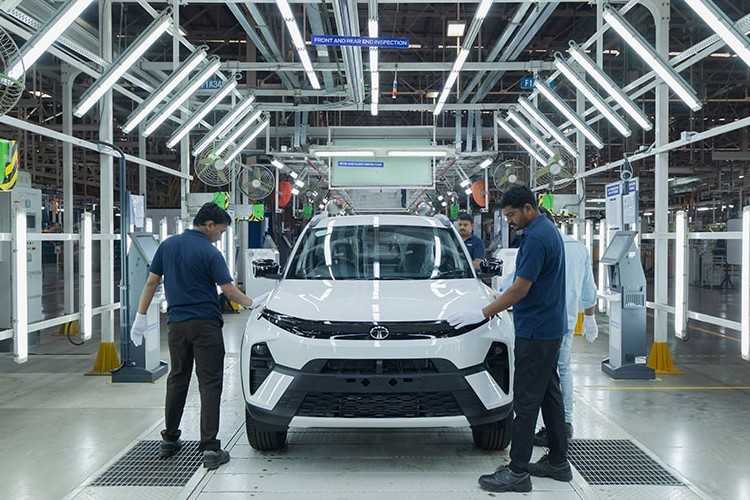
Economic growth depends on innovation and technological progress — a fact highlighted by the 2025 Nobel Prize in Economics which highlighted the role of human capital in driving productivity. In India, this linkage is most visible in the automobile industry, a pillar of manufacturing and employment. Yet, the sector faces widening skill shortages and skill gaps that threaten its global competitiveness.
The automobile industry contributes nearly 49% of India’s manufacturing GDP and employs millions. However, the sector struggles to find workers with the right technical and soft skills. As India shifts towards electric vehicles (EVs), hybrid and flex-fuel systems, and smarter factories powered by automation, AI, and robotics, the demand for skilled engineers and technicians is growing faster than the supply. A recent NCAER National Skill Gap Study (2025) confirmed that both supply- and demand-side mismatches are holding the sector back.
READ I Private sector slowdown signals a gear shift, not crisis
Supply-side challenges in automobile industry
The supply-side problem begins with training. Many candidates lack practical knowledge of working with advanced machinery and digital systems. For most, the first experience of “working with their hands” comes on the factory floor. This lack of exposure leads to high attrition rates.
Soft-skill deficiencies add to the challenge. Poor communication, low discipline, and limited teamwork skills make new recruits less effective. Courses on battery technology, mechatronics, automation, and robotics remain scarce, while there is a shortage of qualified trainers. Even geography plays a role — firms often struggle to find a local skilled workforce willing to relocate.
Large automotive firms fill this gap through on-the-job training, covering technical and interpersonal skills. Some partner with ITIs to co-design curricula, set up labs, or share trainers. These partnerships help but fall short of meeting the industry’s vast needs. Smaller component makers and service workshops hire unskilled labour, training them internally or multi-skilling workers to cut costs.
Demand-side barriers: Image and inclusion
Automobile industry leaders acknowledge a perception problem. Shop-floor jobs are viewed as low-paying and physically demanding. Graduates trained in automotive trades often prefer better-paying delivery jobs in cities. Meanwhile, high-end engineering talent gravitates to the IT sector, attracted by salaries and cleaner work environments.
Gender imbalance compounds the issue. The automobile industry is overwhelmingly male-dominated, with women making up just 3.4% of the workforce (PLFS 2023-24). Only 1.8% of women are in vehicle manufacturing and 1% in repair and maintenance. Some EV assembly units have pioneered all-female lines, but these are exceptions. Workplaces lack basic facilities and gender-sensitive norms, deterring women from joining or staying in the industry.
Addressing skill gap for the future
Closing the skill gap requires simultaneous action on both the supply and demand sides. Curricula at ITIs and engineering colleges must evolve in line with emerging technologies — from EV design to cybersecurity and data analytics in mobility. Industry-linked training should become the rule, not the exception.
Equally, the automobile industry must make its jobs aspirational. Many young people are unaware that leading automakers offer career paths where technicians can rise to managerial roles through upskilling and reskilling. Awareness campaigns and visible success stories can reset these perceptions.
To attract niche talent — in software, AI, and systems engineering — companies will need to offer competitive pay and better working conditions. At the same time, automation that reduces physical strain and strict enforcement of POSH (Prevention of Sexual Harassment) guidelines can encourage more women to participate.
No single stakeholder can solve the skill crisis. Industry-academia partnerships, especially at the local level, are essential. Firms must continue co-creating courses and offering apprenticeships, while governments can incentivise regional skill mapping to align labour supply with demand.
Regular industry surveys should track evolving job roles and required competencies in real time. This will help design responsive policies for the next generation of manufacturing jobs. A coordinated skilling ecosystem — combining private innovation, public policy, and institutional accountability — is India’s best bet to sustain growth in its most dynamic manufacturing sector.
Isha Dayal is Fellow and Bornali Bhandari is Professor at National Council of Applied Economic Research (NCAER). Views expressed are personal.
